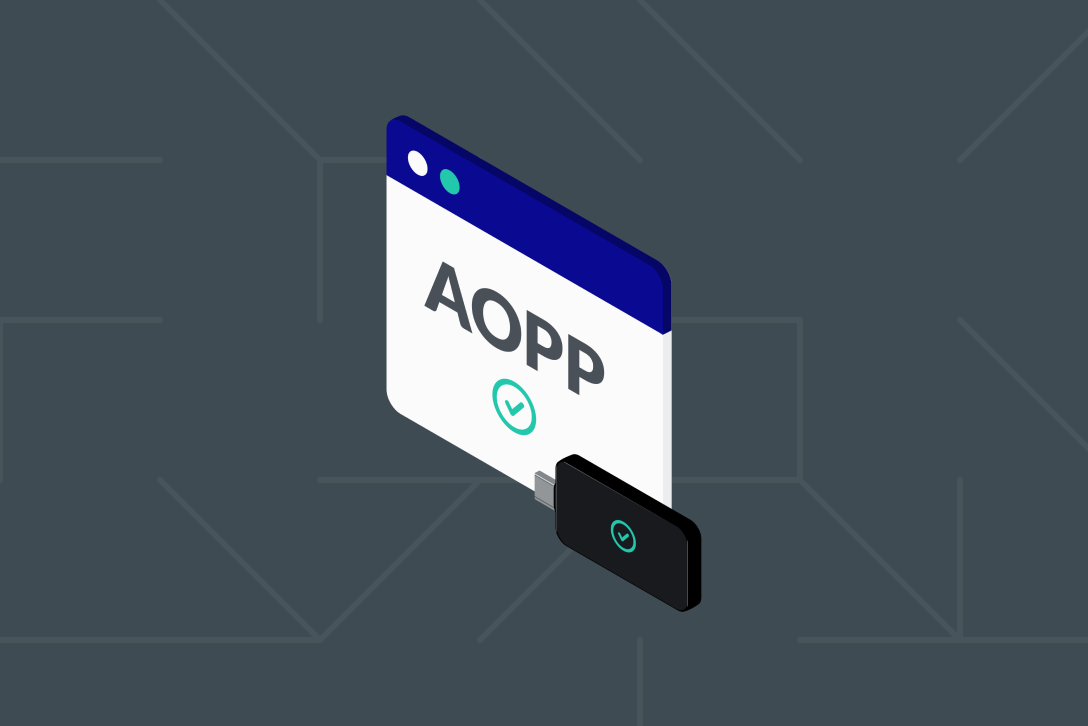
How To Prove Ownership Over an Ethereum Address
A salient feature of the Ethereum blockchain is that it is host to all kinds of different assets. Besides its native currency, Ether (ETH), other currencies such as Tether (USDT) or more exotic assets such as NFTs are all traded and exchanged on Ethereum. Thus, a single address may transact with all kinds of different assets. Therefore it is crucial to have a mechanism of address proof ownership on Ethereum, ideally compatible with hardware wallets, which allows a user to transact all of these assets with regulated virtual asset service providers (VASPs).
A big difference between Ethereum and Bitcoin is that Ethereum is account-based, and Bitcoin is UTXO based. As a consequence, for Bitcoin transactions, new addresses are usually being generated. On Ethereum, most users transact with a single account for a prolonged period of time, often times even exclusively. In other words, if you have ETH and USDT stored in your hardware wallet, you can transact from either currency using a single address. In fact, once you have whitelisted this address, you should be able to use it over and over again.
What Are Ledger and Trezor?
Ledger and Trezor are both hardware wallets. A hardware wallet is a great choice for crypto security as you are able to store the private keys that control your assets offline. A private key is needed to sign AOPP messages used to verify wallet ownership. And that’s where Metamask comes into play.
What Is Metamask?
Metamask is a popular cryptocurrency wallet in the form of a browser extension. In the Ethereum world, it is by far the most popular one. Besides managing private keys, Metamask also connects to hardware wallets such as Ledger or Trezor, meaning it can be used to check account balances, sign transactions and other messages for addresses managed by hardware wallets.
What is Address Ownership Proof Protocol (AOPP)?
More and more countries are imposing the rule that VASPs need to request proof of ownership before any account action can take place from a customer’s self-hosted (unhosted wallet). Among the different ways of proving ownership, Address Ownership Proof Protocol (AOPP) is the most convenient for the end-user.
AOPP is an open standard developed by 21 Analytics and Shift Crypto AG. AOPP is the safest and easiest proof of ownership methods. It is similar to the Manual Signing method, offering the same pros, but in addition, it is fully automated for both the wallet owner (you) and the VASP. There is no copying and pasting of addresses, it cannot be forged, and it isn’t a lot of work - it is a single-click experience.
Now, If We Put It All Together
Until recently, you could use the Metamask browser extension to access your hardware wallet, but you only had a limited number of options when verifying your wallet. Not any more, as AOPP is now available to the Metamask users too, and it is effortless to use.
Connect your hardware wallet to your PC, and log into your Metamask account.
Next, select the Ethereum (ETH) option, then click Connect to Metamask.
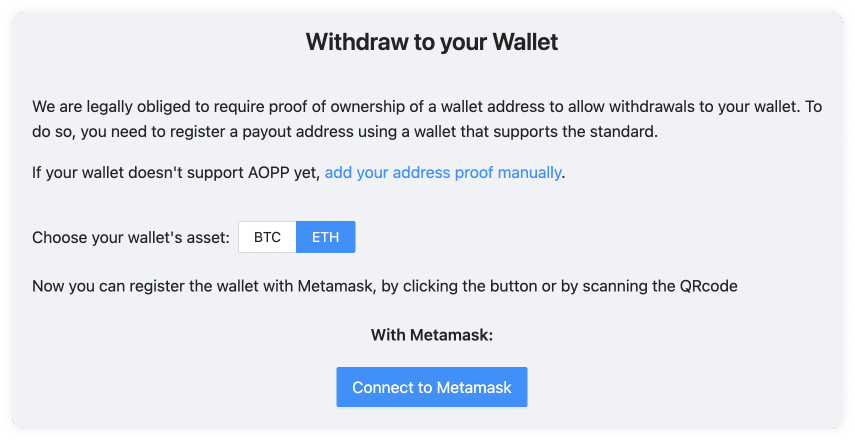
The Metamask extension will appear in the corner of your screen, so you can select which account you will transact from. Once selected, click next.
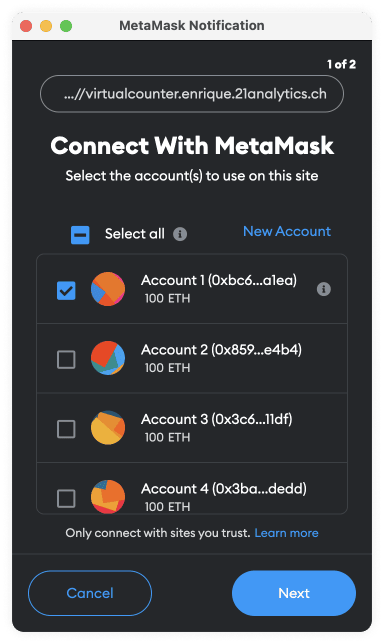
Confirm that you would like to connect to the account by clicking Connect on your Metamask. You will now see that you have connected to the desired address along with an ownership message. Click Sign with Metamask.
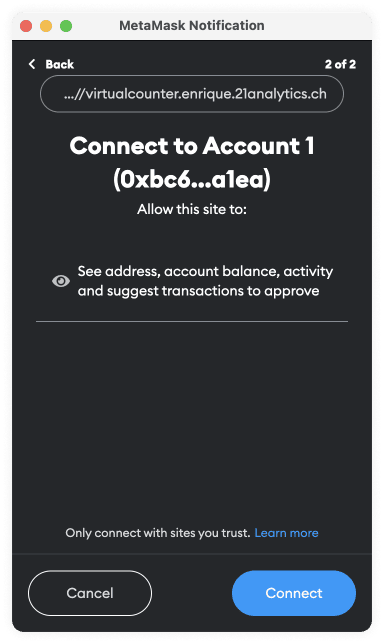
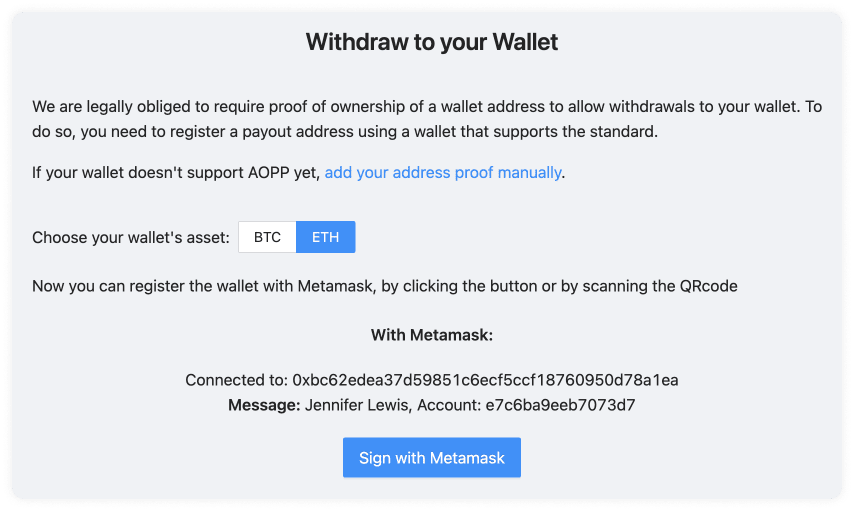
Again, the Metamask pop-up will appear in the corner of your screen, advising you of a Signature Request. In this pop-up, you will see a verification prompt with the message in the wallet you are trying to verify. Now click sign.
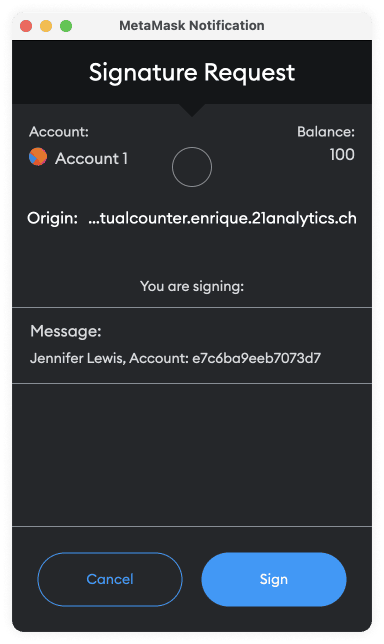
Done! Your address has been successfully registered. You can now withdraw the desired assets.
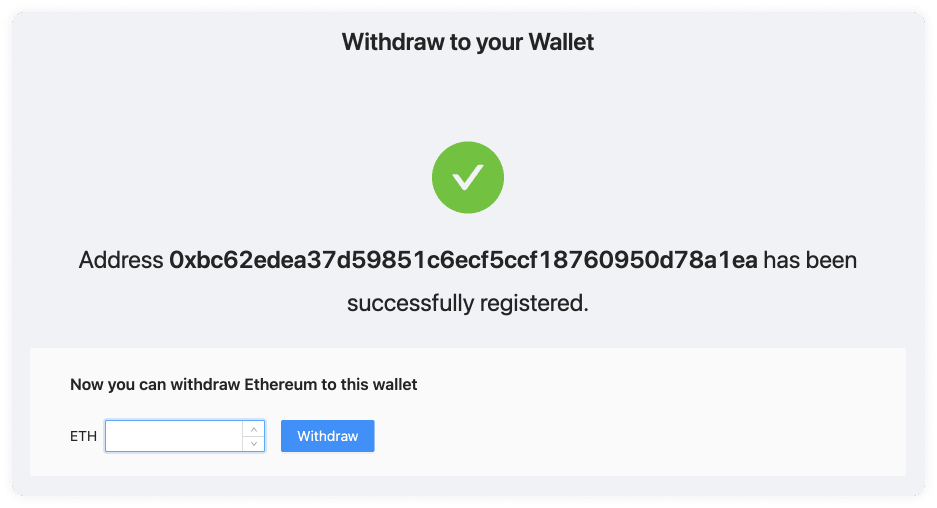

That is it. AOPP is a super easy process. Moreover, your wallet is verified in a matter of seconds! You can now transact with peace of mind, knowing that you have verified your wallet in a secure manner.


